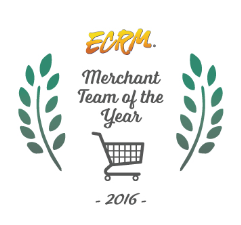Walgreens Supplier Relations Based on Openness, Transparency 1/24/2017
Walgreens Robert Tompkins, general merchandise manager and group vice president for health & wellness, and his staff were recognized this past December with ECRM’s Merchant Team of the Year award for excellence in sourcing, merchandising, and supplier collaboration.
In the first part of the Merchant Team Award coverage, ECRM discussed sourcing strategies with Tompkins, as well as his team members Heather Hughes, divisional merchandising manager OTC, and Mike Wolf, divisional merchandising manager advanced care. In second part of the series, we covered merchandising. In this final part of the three-part Q&A article, we touched on retailer-supplier relations.
ECRM: What is the ideal you try to attain in your relationships with suppliers?
Tompkins: We’re strong believers that key strategic supplier partnerships are critical to achieve our financial and strategic goals. We have countless examples where we have built deep and trusted partnerships with suppliers over the years. I think the foundation is trust. Trust is earned through keeping confidences. Trust is earned through aligning strategies. But, at the end of the day, it’s really about performance. Both our performance for a supplier and how a supplier performs for us.
The other thing that’s so important about trust is we really want existing suppliers to be able to come to us with ideas and products that they’re developing way ahead of time so that we can help educate them on the realities of the retail environment and make sure that as they’re bringing brands or products to market, they align with our strategies. Most retailers now are up to 24 months in their planning cycles, so the sooner suppliers are partnering with us, the better we can work together to achieve success.
ECRM: So to bring you in on the loop when they have something in development so that they can take your input into consideration during the process?
Tompkins: That’s right. Whether it’s pricing, packaging, formulations, displays, go-to-market strategies, or marketing, we can add a lot of value to companies that are bringing brands and products to market. But, the pinnacle of a great supplier partnership, and we’re replete with examples here, is when we can develop exclusives with a supplier partner; when there’s a degree of trust and co-investment. Where we can either develop or bring to the U.S. market products exclusively at Walgreens, we will disproportionately invest in those opportunities. We’ve had several co-developed exclusives with some of the largest CPGs.
ECRM: Gan you give us an example?
Hughes: A great example is the product Compeed. We saw that for blister relief, especially for the feet, there really wasn’t a product out there. And, in recognition of the success of the Compeed brand globally, we had asked J&J if there was an interest in bringing that to the U.S. exclusively for Walgreens.
Tompkins: The other bit that’s really important – and something I think Walgreens does an especially good job at -- is being really clear up-front on expectations. It doesn’t mean that we’re easy or tough, but that we’re very fair and that we’re very clear. And in my mind one of the keys to maintaining good supplier partnerships is to align on what success looks like up-front. That way, it’s not an emotive reaction when something does well or doesn’t do well. You set a benchmark that allows you to change tact if you need to. But, at the end of the day it allows you to build on a great success or if it doesn’t work, you know that with the best of efforts of all parties we just weren’t able to achieve it and then you move on. So, I think our category managers and merchants do a really good job of making sure suppliers understand what it’s going to take to succeed and what success looks like before embarking on a product launch.
ECRM: Full transparency through the entire process.
Tompkins: That’s right. The other thing is, with our global scale, we have a lot to offer suppliers. We have more than 8,000 stores here in the US. Approximately 76 percent of the USA lives within five miles of a Walgreens. We interact with 10 million customers in our stores and online each day. And we have a lot of to offer our supplier partners that go beyond just pure distribution. Conversely, we view partnership as bringing all assets to the table, such as our loyalty data and a CPG’s supplier’s insights. Really good supply chain management on both sides. A willingness to invest in digital marketing on both sides. Those are important assets to leverage to be efficient.
Wolf: To elaborate on one of the partnership aspects Robert alluded to, the mutual expectation alignment is especially important with smaller suppliers, such as those we connect with at ECRM meetings. Some small suppliers can feel that once they’re getting distribution, the hard work is over. So, it’s important for them to understand with the category manager what the true benchmarks are for that category so that the suppliers go in eyes wide open with the buyer’s expectations and goals in entering the agreement. If that initial understanding of expectations isn’t there, it becomes a more difficult conversation later. So what’s really important with new suppliers is that you have an open dialogue at the start of business relationship so we really know what we’re mutually getting into and there’s no more difficult discussions later.


